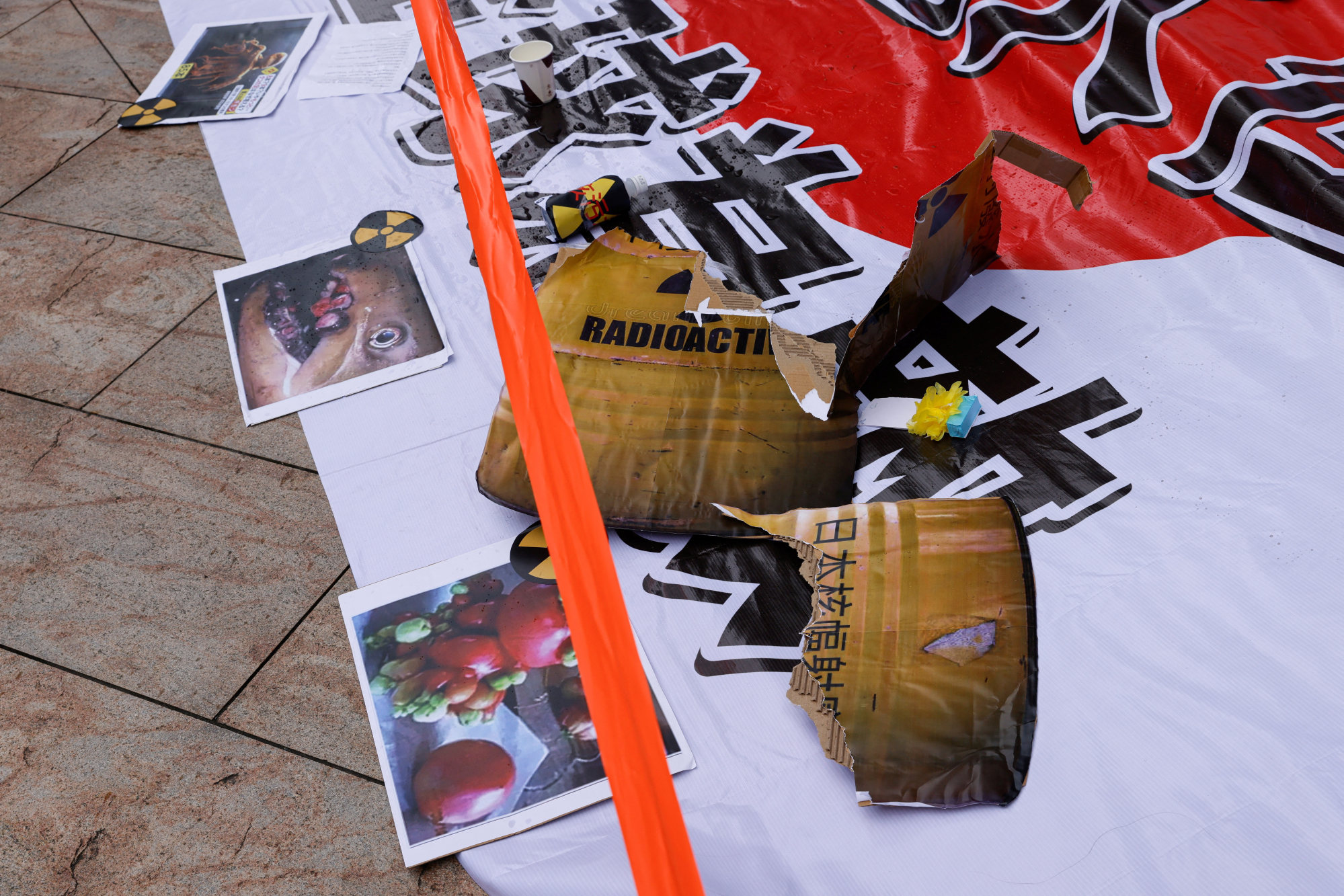
Fukushima waste water release: how mainland China and Hong Kong got it wrong
- The seafood bans are based on unscientific fear over the safety of the treated water
- Of real concern are two issues missing in the hysteria: low public acceptance of nuclear technology, and the impact of the nuclear industry’s long-term use of the environment to dispose of radioactive waste
These responses are misguided as the discharge of contaminated water from Fukushima does not represent a danger for people in mainland China and Hong Kong. Furthermore, they obfuscate more essential discussions that society should have on mistrust related to nuclear technology and on the long-term radiological pollution of the environment.
Following the 2011 nuclear accident at the Fukushima Daiichi nuclear power plant, Japan has been using water to cool the radioactive reactor cores that had melted. Through contact with these cores, the cooling water has been contaminated with various radioactive elements. About 1.3 million tonnes of this contaminated water is now stored in some 1,000 tanks on site.
Storing this radioactive water on site is risky as it could contaminate the surrounding environment if an earthquake were to damage these tanks. Japanese authorities have decided to discharge the contaminated water into the ocean to prevent this risk and to free up storage space for newly generated contaminated water.
Finally, the treated water is diluted, 1 part to 100 parts with seawater, which brings its radioactivity level to well below safety standards for drinking water set by the World Health Organization, before being discharged into the ocean.
Consequently, public opinion in Hong Kong has been taken over by fears of radioactive contamination. A close look at the technical aspects of Japan’s plan and at routine protocols in the nuclear industry shows these fears are unfounded.
Besides, many nuclear facilities around the world are routinely discharging water contaminated with tritium into the ocean. For instance, the Kori nuclear power plant in South Korea annually discharges contaminated water with four times more tritium than the Fukushima water; the La Hague nuclear facility in France annually discharges about 500 times more tritium into the English Channel.
The acute fear of impending contamination in mainland China and Hong Kong distract our society from the more fundamental issues that are exposed in this crisis.

As scholars have described, there is a growing gap in the perception of factual realities between the West and China, including scientific-related events where one would expect experts on both sides to agree.
The Hong Kong government’s decision to ban certain Japanese seafood imports might seem at odds with the scientific conclusion of the IAEA. Few technologies spark as much fear in people’s minds as nuclear technology, even when the authorities use scientific facts to assure them of its safety.

Hong Kong is also surrounded by multiple nuclear power plants that discharge contaminated water with tritium regularly and which might lead to radioactive contamination in case of accidents. The government needs to start a public conversation on public acceptance of nuclear technology.
Finally, while the short-term impacts of Japan’s decision to discharge the contaminated water are negligible, its longer-term and symbolic impacts are not. The nuclear industry has a long history of using the environment as an expandable space to dispose of radioactive waste.
The environment is neither expandable nor inert, however. A growing number of experts are worried about unforeseen accumulations of radioactive elements in the biosphere such as tritium. Tritium is a key element of modern thermonuclear weapons and a by-product of nuclear electricity.
The nuclear industry will produce more and more tritium and the international community must come up with ingenious policy and technological solutions to deal with tritium pollution.
Japan’s decision to discharge 1.3 million tonnes of water contaminated with tritium extends the perilous illusion that the environment is expandable and inert to nuclear pollution.
Julien de Troullioud de Lanversin is an assistant professor at the Hong Kong University of Science and Technology’s Division of Public Policy

